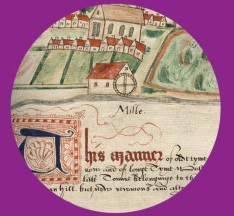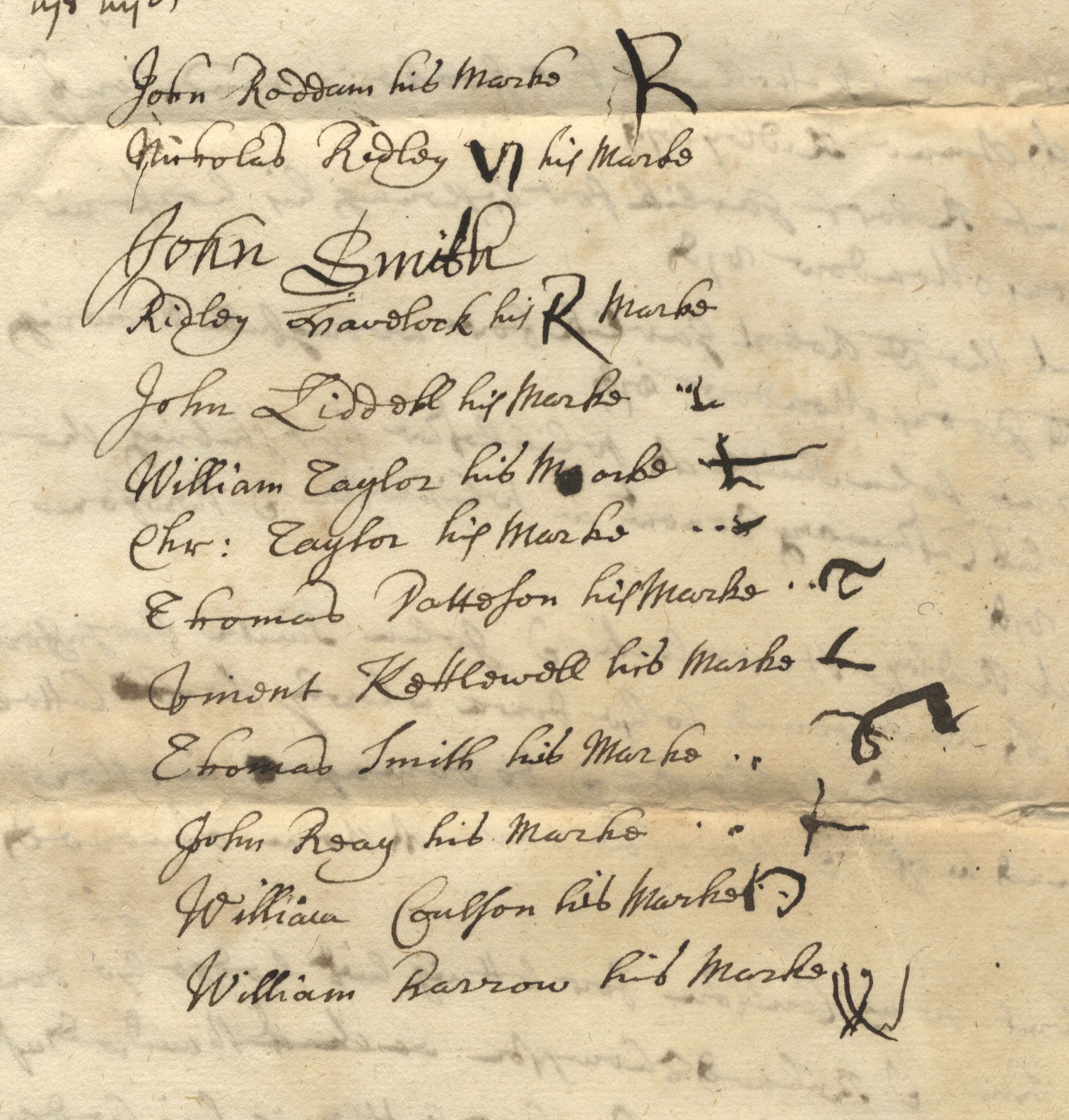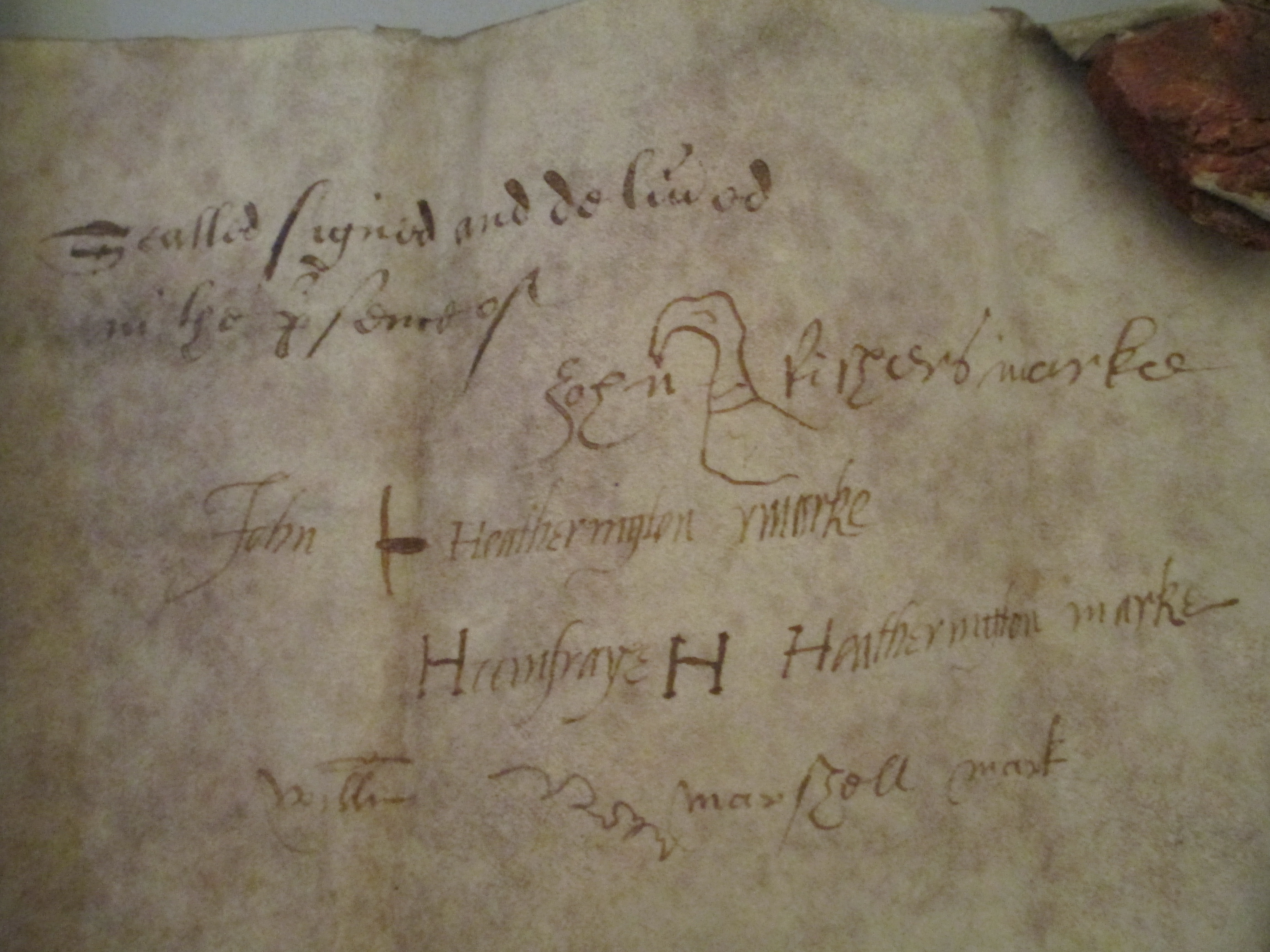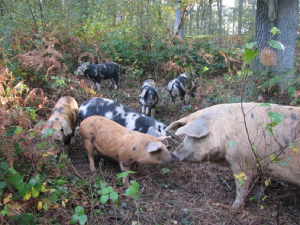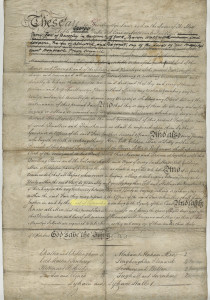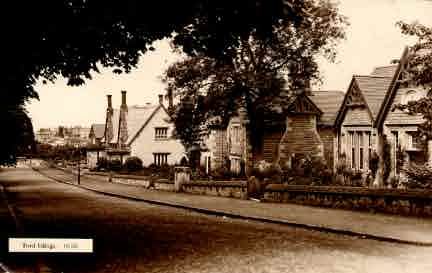In the course of looking through some of the manorial sources we are using on the project we see a lot of different types of handwriting. Some are beautifully practiced and elegant, others scribbled and hard to decipher. Examples like the one below from Morpeth in 1659 show how different letters can look to modern eyes, but with time and patience they can be worked out.
This however is the handwriting of educated clerks and court officials. Most of the rest of the population would have been illiterate, so it would be required for them to give a ‘mark’ of some description. For more affluent classes this may be shown by a seal, but in most cases a simple ‘X’ would show they had been present and gave their agreement to the document being signed. However more complicated marks could be devised by an individual to identify themselves. Such identifiers are found in other areas of medieval and post-medieval life. Masons’ marks on stone would identify who had prepared each block, and would often be passed down families, with additions by each generation. Likewise potters would mark the underside of their work to show its provenance in their workshop. Though we have featured the document below previously, this is a good example of a document signed by numerous people with their own marks.
There are several ways these men have chosen their mark. John Roddam (1st line) has taken the ‘R’ from his surname. Conversely Ridley Havelock (4th line) has used the initial ‘R’ from his first name, and the same can be found with ‘T’ for William Taylor (6th line) and Thomas Pattason (8th line). William Ransom (last line) uses a bold ‘W’ of two crossed V’s like witches’ marks, and perhaps Thomas Smith’s (10th line) began as a ‘T’, but was added to. The ‘N’ of Nicholas Ridley (2nd line) is reversed, and William Coulson (12th line) could be an inverted ‘C’, or reflect a horseshoe or other device. The others seem to be choosing marks unrelated to their name, similar to simple marks like the masons’ marks.
We are keeping our eyes peeled for interesting examples like these as we look through the manorial documents we hold, and were excited to share a recent discovery that has given us much discussion and food for thought. In the image below we see a ‘H’ used by Humphrey Heatherington like the previous examples, and John Heatherington’s half-cross is much like that used by John Reay (11th line). A squiggle also represents a mark or signature used by William Marshall. However our favourite is that used by John Riches, a doodle perhaps symbolising a hook, or even a bird.
We would love to be able to work out what it means, if anyone has any suggestions please let us know! In the meantime we will keep looking for other interesting examples.

